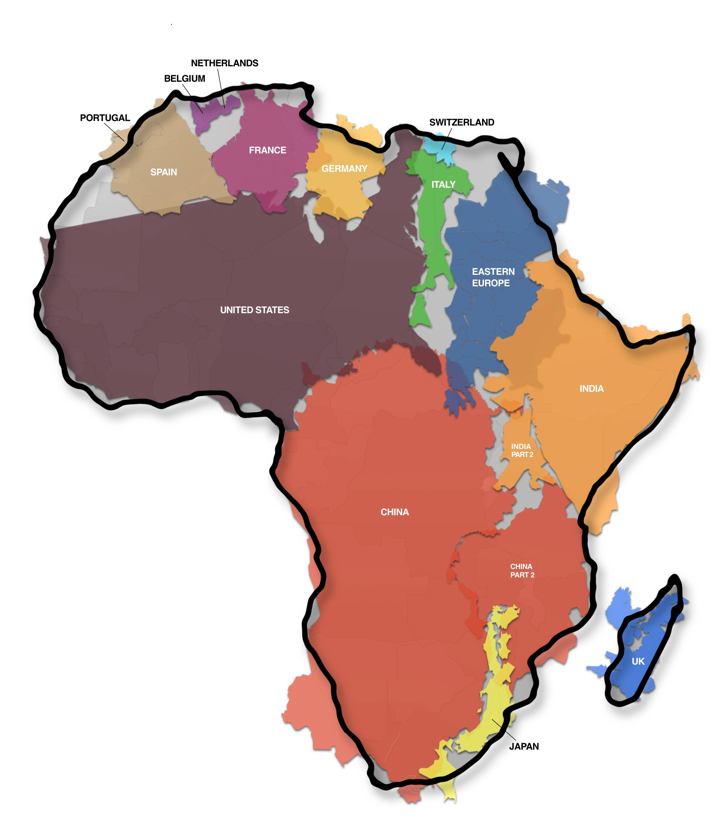Just How Big is the Opportunity in Africa?
According to Business Insider, 11 of the world’s 20 fastest-growing economies are located in Africa. That doesn’t even include the continent’s powerhouses, Egypt, South Africa and Nigeria, which just recently became the continent’s largest economy.

Many international investors carry a mental map of Africa that is based on the Mercator Projection, which grossly misrepresents the continent’s size.
For many international investors and developers, the news that countries in sub-Saharan Africa are poised to grow at a rate of 6% in 2014 comes as a surprise. After all, this growth rate is ahead of India’s, and within a percent or so of China’s. According to the Ventures Africa, Nigeria, Niger, Ghana, Liberia, Sierra Leone, Guinea and Burkina Faso are projected to grow at nearly 7% in 2014.
Unfortunately, infrastructure across Africa—especially relative to power generation and distribution—remains weak.
The Power Problem
According to U.S. News & World Report, international companies such as General Electric and Symbion Power are making major investments in Africa’s fastest growing countries, like Nigeria.
But even in Nigeria, businesses and consumers will have to wait at least four years before the power infrastructure catches up to the country’s growth. In an article posted to The Energy Collective, “a real transformation of the power sector in sub-Saharan Africa will require long term planning, extensive regulatory overhauls, and serious commitment to fund energy technology manufacturing and R&D on African soil.”
“The power situation is likely to remain unresolved for decades,” says Dr. Robert Degeneff, president of Utility Systems Technologies (UST).
Blackouts will continue to strike, even in developed countries like South Africa. And short of building expensive and politically sensitive co-generation facilities, blackouts will have to be tolerated.
But blackouts are not the most common problem faced by facility managers across Africa; brownouts are.
In Zimbabwe, for example, the government has been able to get the power flowing, but only by licensing a patchwork grid made up of more than a dozen independent power producers (IPPs), which virtually assures regular voltage anomalies.
Given the realities on the ground, how can developers take advantage of the region’s growth without resorting to overbuilt diesel backup or politically problematic co-generation solutions?
Plugging Into the African Grid
Until just two or three years ago, U.S. embassies in Africa and in other developing regions were very noisy places. Not because of the hustle and bustle of the staff, traffic or construction, but because many of these embassies were powered by diesel generators, 24/7. Why? Because reliable power quality for essential operations required isolation from the local grid. Independent power generation was seen as the only viable solution.
No longer.
Today, with the assistance of UST SureVolt™ Electronic Voltage Regulators, U.S. State Department facilities across the world, including more than a half dozen embassies across Africa, are drawing power safely from the local grid. UST’s state-of-the-art technology instantly compensates for voltage anomalies, including extended brownouts.
UST technology is deployed in more than 30 countries across the globe, and has proven capable of providing clean power to hospitals, hotels, factories, data centers and government outposts, no matter where in the world they are located.
See related article: Can UST’s Technology Lower Room Rates Across Africa?

